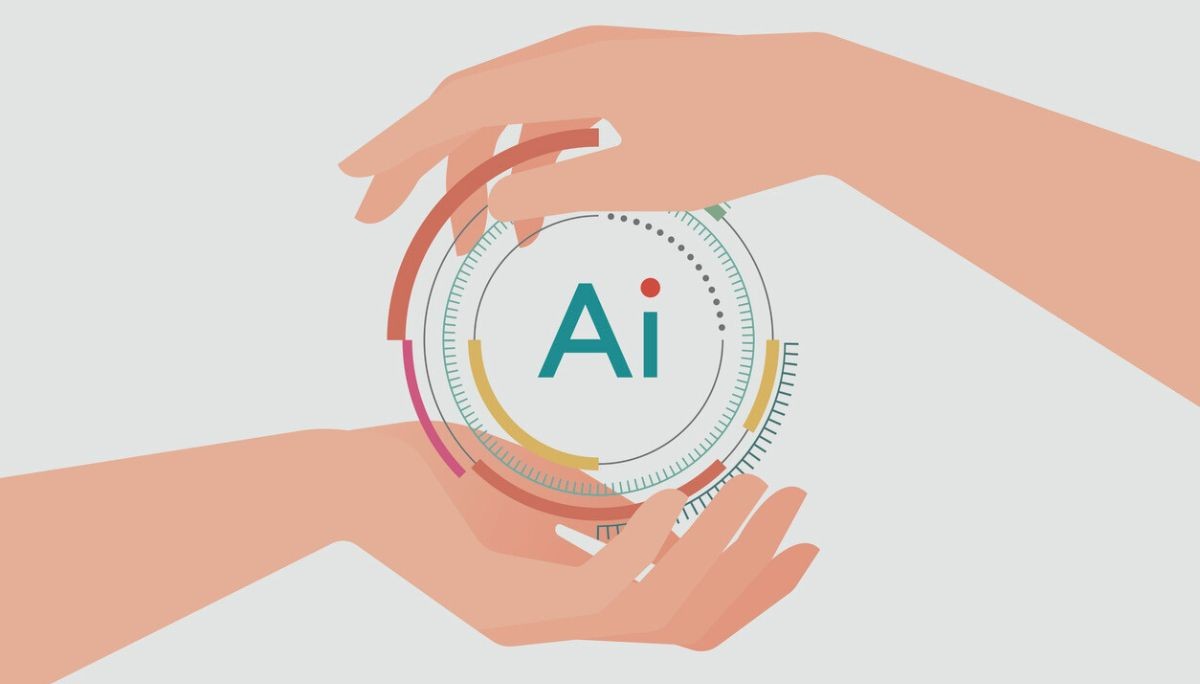How Are LLMs Trained? A Beginner-Friendly Look at Large Language Models
By
Samantha Cox
•
Jun 10, 2025
How are LLMs trained? Training large language models involves multiple stages. It starts with pre-training using vast datasets, followed by supervised fine-tuning to specialize in specific tasks. Then, there’s instruction tuning to better handle human inputs, and finally, reinforcement learning from human feedback (RLHF) to align responses with human preferences. In this article, we’ll break down each of these stages to show how LLMs become so good at generating human-like text. For recruiters and AI engineers alike, understanding this process is key, and with Fonzi AI, you can tap into this tech to identify top talent or streamline your AI-driven hiring strategies.
Key Takeaways
Large language models (LLMs) are trained through a multi-phase process, starting with pre-training on large datasets to build a strong foundational understanding of language.
Supervised fine-tuning enhances LLM performance for specific tasks by utilizing labeled datasets and adjusting model parameters based on observed errors.
Reinforcement Learning from Human Feedback (RLHF) aligns LLM outputs with human preferences, improving the reliability and user-friendliness of interactions.
Pre-Training: Building the Foundation

In large language models, pre-training is where it all begins. This foundational phase is similar to laying the groundwork for a skyscraper, providing the stability and structure needed for everything that follows. During pre-training, models are exposed to large-scale unannotated text to learn underlying language structures. This process is crucial because the model’s performance is heavily influenced by the variety and quality of the data used during this stage.
Effective pre-training requires a diverse set of texts to cover different contexts and linguistic nuances. Think of it as teaching a student not just the basics of a language but also its various dialects, idioms, and contexts. Self-supervised learning plays a pivotal role here, allowing models to extract patterns without explicit human labeling, thereby enhancing their general understanding. This method involves the model learning by predicting missing pieces of data, a task that hones its ability to understand and generate coherent text.
The main focus during pre-training is to train language models on predicting the next word in a sequence. This seemingly simple task is more complex than it appears. The model must understand context, grammar, and semantics to accurately predict the next token from input tokens. Over time, this process helps the model develop a deep understanding of natural language processing and token vocabulary.
The difference between pre-training and fine-tuning in large language models is crucial for understanding their development. While pre-training focuses on broad, general knowledge, fine-tuning hones in on specific tasks and applications. Pre-training lays the foundation upon which everything else is built. It’s a marathon, not a sprint, requiring immense computational power and a vast and varied training set.
The model at this stage possesses foundational knowledge, prepared for fine-tuning to address specific tasks using a base pre-trained model.
Supervised Fine-Tuning: Enhancing Task Performance

Once the pre-training phase builds the foundation, the next step is supervised fine-tuning, where the real magic happens. This phase is all about enhancing the model’s performance for specific tasks by refining its capabilities using labeled datasets. Imagine a sculptor chiseling away at a block of marble to reveal a detailed statue; supervised fine-tuning is quite similar.
The goal here is to adjust a model’s weights based on the error observed during training with labeled data. This process significantly enhances model performance for specialized applications, such as healthcare or legal documents. By addressing the unique requirements of a business domain, fine-tuning helps models perform better in rare scenarios. For instance, a model fine-tuned on medical texts will be much more adept at diagnosing diseases or suggesting treatments.
Supervised fine-tuning requires a clearly defined task to provide focus and direction for the model adjustments. This could range from language translation and text classification to sentiment analysis and content creation. The integration of training dataset instruction datasets into fine-tuning reduces the need for extensive prompt engineering, making it easier for users to obtain accurate model responses.
Specialized knowledge from diverse fields, like finance or healthcare, can be seamlessly integrated into LLM training for improved task performance. Parameter-efficient fine-tuning focuses on updating a limited set of model parameters to save computational resources. This approach leverages previously obtained knowledge, enhancing efficiency and performance by building on the pre-trained model’s capabilities.
After this phase, the model excels in specialized tasks, equipped to handle a range of applications with high accuracy.
Instruction Tuning: Adapting to Human Inputs
As we learn more about the training process, we arrive at instruction tuning, a crucial phase that helps models adapt to human inputs during model training time. Instruction tuning focuses on training models to follow specific instructions and respond to user requests more effectively. This phase is particularly important for tasks like translation, answering questions, and generating human-like text.
What sets instruction tuning apart from other fine-tuning methods is its focus on tasks that resemble user prompts rather than just optimizing outputs. Instruction fine-tuning involves training with examples that illustrate how the model should respond to various queries. This could range from simple instructions like “Translate this text” to more complex ones like “Summarize this article in a few sentences.”
Instruction tuning can also be applied in areas such as artificial intelligence-generated images and voice assistants to improve user engagement. It not only improves performance on tasks similar to those in the training data but also enhances general follow instructions capabilities. This instruction tuning phase leaves the model more adept at comprehending and executing user instructions, enhancing interactivity and user-friendliness.
Reinforcement Learning from Human Feedback (RLHF): Aligning with Human Preferences
The final phase in the training process is Reinforcement Learning from Human Feedback (RLHF), a method designed to align model outputs with human values and preferences. RLHF involves optimizing machine learning models by integrating feedback from humans to better align model outputs with human values. The focus here is to ensure that model responses are helpful, honest, and harmless.
One of the potential issues addressed by RLHF is that models can provide harmful content or misleading information. To mitigate this, human feedback is utilized to establish a reward model that guides the reinforcement learning process. Human annotations help to distinguish between better and worse outputs, creating a system where the model learns to prioritize responses that align with human preferences.
A reward model in RLHF is trained by ranking multiple outputs from human labelers. This model helps the machine understand what kind of responses are preferred by humans. By incorporating human preferences, RLHF helps models produce content that resonates more with human users. This process results in more natural and contextually appropriate outputs, enhancing the overall user experience.
Models trained with RLHF display significant performance improvements, resulting in more reliable and user-friendly interactions. This phase ensures that the model is not just capable of performing tasks but doing so in a manner that aligns with human expectations and values, as supported by the latest research.
The Importance of Diverse Training Data

Training large language models is akin to teaching a child; the more diverse their experiences, the better they understand the world. Similarly, large language models LLMs benefit from exposure to a wide range of human-generated data, improving their adaptability and output relevance. Incorporating varied language styles during training LLMs enhances an LLM’s capacity to produce more human-like text. Understanding how LLMs work can further enhance these training processes.
Diverse training data helps reduce biases, ensuring LLMs represent multiple cultural and demographic perspectives. This is crucial for creating models that are fair and inclusive. Using multiple data sources in LLM training aids in preventing overfitting, allowing models to generalize better to new inputs.
This phase ensures the model becomes versatile, capable of interpreting and generating diverse natural language styles and contexts, including text generation.
Computational Resources Required for Training

Training large language models requires significant computational resources. Graphics Processing Units (GPUs) excel in deep learning due to their ability to perform parallel processing, offering a balance of performance and energy efficiency. Tensor Processing Units (TPUs) are tailored for machine learning tasks, providing high efficiency and performance but requiring specialized programming knowledge.
Choosing the right CPU is also critical in LLM training, as it needs to support enough PCIe lanes to handle multiple GPUs without creating bottlenecks. While traditional CPUs are precise, they are often slower and less efficient for training large models compared to GPUs and TPUs. A significant amount of computing power is needed to train a large language model.
Understanding the roles of these computational resources is crucial for anyone looking to delve into the world of LLMs. Readers will gain an appreciation for the significant computational power necessary to develop these computer science models.
Fonzi’s Unique Approach to Hiring Top Engineers
Fonzi’s innovative approach to hiring top engineers is a game-changer in the industry. The company utilizes structured, bias-audited evaluations to enhance fairness in the hiring process. These evaluations ensure that all decisions made during the hiring process are based on objective data. Fonzi’s recruitment strategy connects teams to a dynamic talent network, ensuring scalability and consistency.
The company’s hiring system utilizes a continuously updated network of both active and passive candidates to ensure a constant stream of top talent. Fonzi integrates seamlessly with existing Applicant Tracking Systems (ATS) to streamline the hiring workflow for recruiters. This approach supports recruiters and hiring managers by facilitating a more data-informed recruitment process.
Fonzi’s recruitment process not only preserves but also improves the candidate experience. Readers will recognize how Fonzi’s innovative hiring strategies aid in the effective training and deployment of LLMs.
Summary
In summary, training large language models involves a multi-faceted process that starts with pre-training and moves through supervised fine-tuning, instruction tuning, and reinforcement learning from human feedback. Each stage plays a crucial role in developing models that are not only powerful but also aligned with human values and preferences.
The importance of diverse training data and significant computational resources cannot be overstated. Companies like Fonzi, with their innovative hiring strategies, play a vital role in ensuring that top engineering talent is available to drive these advancements. As we continue to push the boundaries of what LLMs can achieve, understanding these processes will help us appreciate the complexity and potential of these remarkable models.




